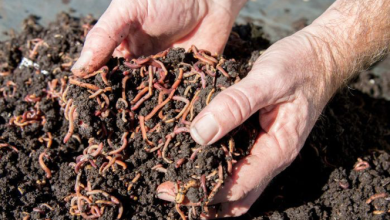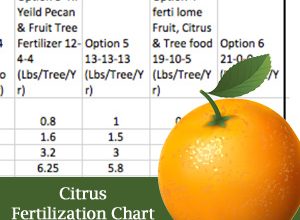Raspberry: [Cultivation, Irrigation, Associations, Pests and Diseases]
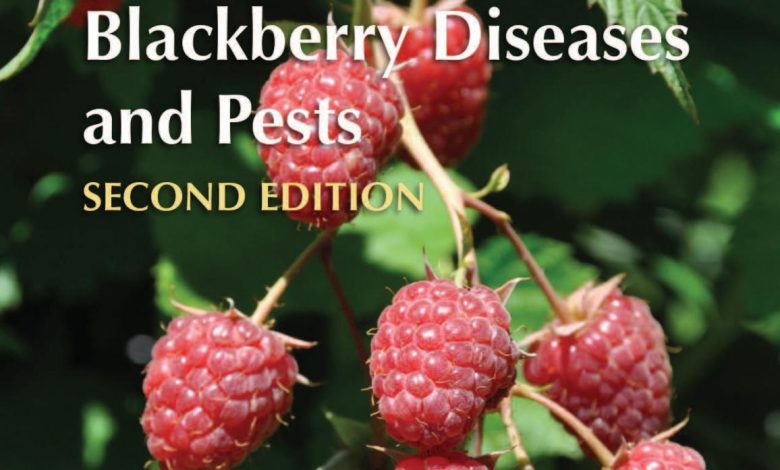
Important points when sowing Raspberries
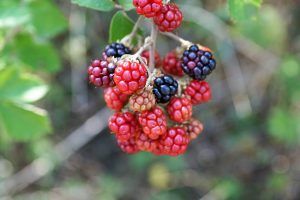 Where to sow? Full light. Lots of direct sunlight.
Where to sow? Full light. Lots of direct sunlight.- When? In autumn or winter.
- How do we prepare the land? Removed, removing weeds. With clayey substrate and rich in organic matter such as humus.
- How do we water? By flood.
- How often do we water? In summer, abundant watering without flooding. The rest of the year spaced irrigation.
- Plagues and diseases? The Aphid, blight. Iron chlorosis and botrytis.
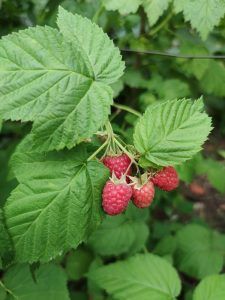 Raspberries are the fruits of raspberries (Rubus idaeus), medium-sized, shrubby, perennial plants. These fruits provide numerous nutrients such as beta carotene and vitamins B1, B2, B3, B6, C, E K.
Raspberries are the fruits of raspberries (Rubus idaeus), medium-sized, shrubby, perennial plants. These fruits provide numerous nutrients such as beta carotene and vitamins B1, B2, B3, B6, C, E K.
The raspberry plant belongs to the Rosaceae family, it is leafy and as it grows, the plants become longer, more or less like tomato plants.
With each new stem small white flowers appear, with five sepals and five petals, gathered in cluster inflorescences of up to 10 flowers. The raspberry appears as an aggregate of various drupes that ripens in summer and autumn.
Although they are self-fertile, pollination carried out with the support of insects increases the number and quality of the fruits. The pulp of the fruit is very aromatic and has a bittersweet flavor that is lost from the moment they are cut from the plants.
There are references about its cultivation, varieties and consumption in Greek and Roman cultures.
When to plant a raspberry plant?
Raspberry planting is ideal to be done during the fall or early winter, using bare root plants.
Where to do it?
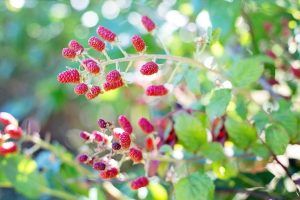 The raspberry plant needs to be located in a fairly sunny place, since it needs between 8 to 10 hours of direct sunlight. They do well in cool, temperate climates.
The raspberry plant needs to be located in a fairly sunny place, since it needs between 8 to 10 hours of direct sunlight. They do well in cool, temperate climates.
Placing this plant in direct sunlight will benefit the development of its fruits in flavor and juiciness. But the raspberry needs to be located in a place protected from the winds that can spoil and damage its fruits.
How to prepare the land?
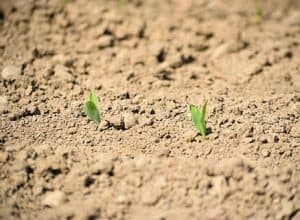 Before starting the cultivation of raspberries, it is necessary to carry out some cleaning tasks in the field to remove the weeds.
Before starting the cultivation of raspberries, it is necessary to carry out some cleaning tasks in the field to remove the weeds.
The land for the raspberry plant must be loose, non-compact soils with a good supply of organic matter, deep and loose.
It must also have a good water retention capacity, but without waterlogging because its root system does not tolerate them. Deep, cool but well drained, loose, siliceous-clay in nature and pH 6.0 or less or slightly acidic.
How do we water a raspberry plant?
The raspberry plant requires abundant watering in summer and prefers substrates or spaces with good drainage.
For cultivation in the garden, the ideal is to water in summer, every 5 to 7 days, through the flooding process.
How do we plant a raspberry plant step by step?
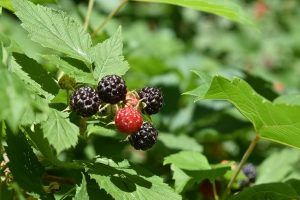 The cultivation of the plant that produces raspberries is very simple to do both in a small area of the orchard and in the garden.
The cultivation of the plant that produces raspberries is very simple to do both in a small area of the orchard and in the garden.
To plant raspberries, the first thing to do is select one of the many varieties on the market.
Ideally, get some hermaphrodite raspberries that don’t need other plants to reproduce, such as Mailing promise, Glen clova, Mailing jewel, Mailing leo, and latham.
To sow the raspberry you can follow the following steps:
- Dig a furrow one shovel deep and at least 60 cm wide.
- Remove the bottom and place a 10 cm layer of compost or decomposed manure.
- Mix more organic matter with the soil when filling the furrow.
- Bury the plants with good depth.
- Separate the specimens at least 45 cm and 1.8 m should be left between rows.
- Water abundantly without flooding.
- Locate the plant in full light and have direct sun.
- Fertilize at the end of winter with padding and cured manure, humus or compost so that the plant recovers its energy.
It is important to remember that the raspberry plant must be supported with trellises, whether made with reeds or wires or any other type of format so that the plant climbs up the support and is not scattered on the ground.
What favorable associations does it have?
The association of crops of compatible plants produces benefits with respect to their cultivation separately, in addition to the use of light, water and/or nutrients.
Some varieties of raspberries require other plants to reproduce, which is why it is important to select the associations well in such a way that a good product is achieved.
What pests and diseases attack raspberry plants?
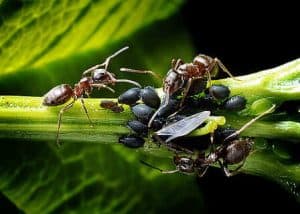 Pests and diseases that attack raspberries often begin with iron chlorosis, a problem in which the leaves turn yellow with well-marked green veins.
Pests and diseases that attack raspberries often begin with iron chlorosis, a problem in which the leaves turn yellow with well-marked green veins.
This is an indication that the plant lacks iron, so it is recommended to apply iron chelate that can be purchased at any agricultural store.
The appropriate dose will be the one recommended in the indications. Among the pests that affect raspberries are aphids, well known on fruit plants, and also blight, but birds are also attracted to the plant.
Bibliography and references
- Encyclopedia My first knowledge about Plants, Snakes and Conservation. (1961). Spanish edition by Dr. Frank Thompson. Grolier Publisher Incorporated New York. Printed in Mexico.
digital database
- Joseeljardinero.com . Mistakes when watering plants. Reproduced from: https://www.joseeljardinero.com/errores-al-regar-las-plantas/
- Comoplantar.com. How to plant raspberries, crop care and how to harvest their fruits. Reproduced from: https://como-plantar.com/raspberries/
- Hogarmania.com. Twelve things you should know about how to grow raspberries. Jardinatis.com. Reproduced from: https://www.hogarmania.com/jardineria/mantenimiento/huerta/cosas-debes-saber-sobre-como-27493.html
- Verdecora.es Guide to planting raspberries. Reproduced from: https://complete-gardening.com/gardening/guide-to-planting-raspberries/
- Infoagro.ar. Raspberry cultivation. Reproduced from: https://www.infoagro.com/frutas/frutas_tradicionales/frambueso.htm
- Martinez, Edward. Costs and benefits of growing raspberries. Reproduced from: https://inta.gob.ar/sites/default/files/script-tmp-frambuesa.pdf
- Huerta del corneja.com. How to plant and grow raspberries. Reproduced from: https://huertadelcorneja.com/plantar-cultivar-frambuesas/
- Lahuertinadetoni.com. 12 tips for growing raspberries at home. Reproduced from: https://www.lahuertinadetoni.es/12-consejos-para-el-cultivo-de-las-frambuesas-en-casa/

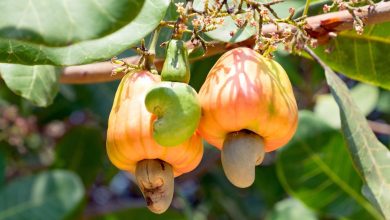
![Photo of Plant a Cypress: [Cultivation, Care, Pests and Diseases]](https://www.complete-gardening.com/wp-content/uploads/2022/08/plant-a-cypress-cultivation-care-pests-and-diseases-390x220.jpg)
